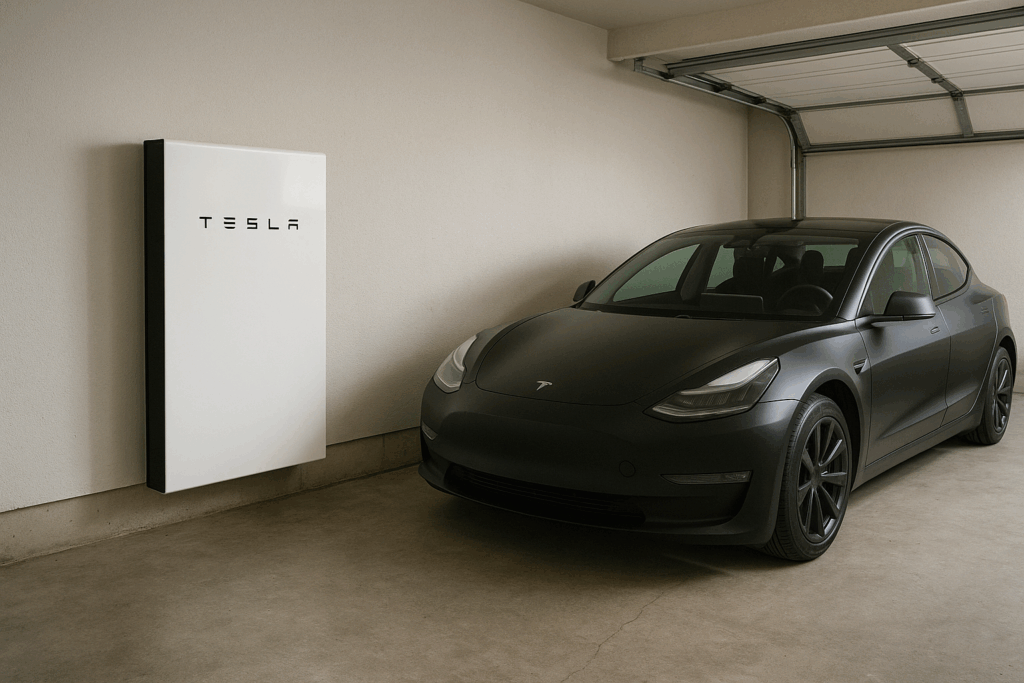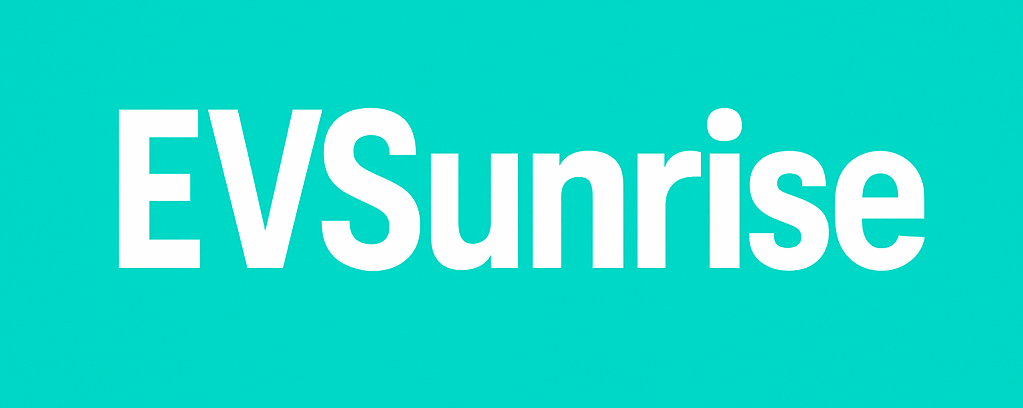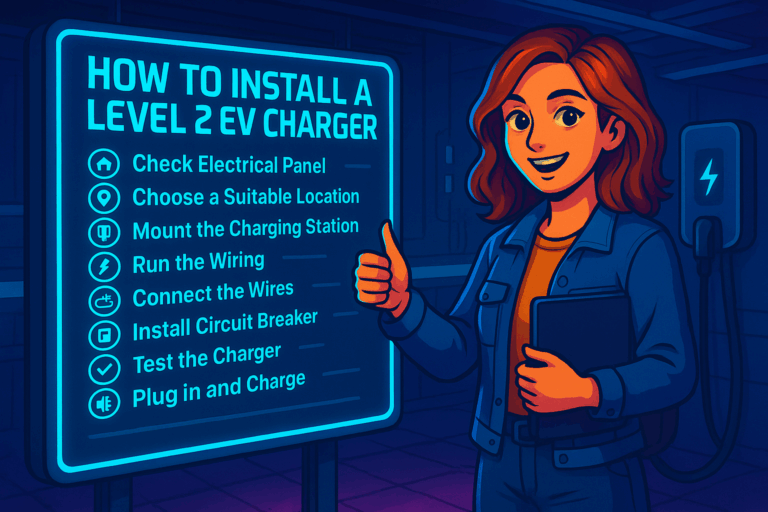Tesla Powerwall 2025 in the US: What’s New & Why It’s a Game Changer for Home Energy
When Tesla unveiled the Powerwall in 2015, most saw a niche battery pack—cool tech, sure—but not essential. Now, a decade later, it’s become a linchpin in America’s clean‑energy transformation. If the Powerwall started as a spark of ambition, today it’s the steady heartbeat in homes from California to Maine—buffering solar storms, riding through blackouts, and giving homeowners control over both energy and destiny.

🛠️ The Evolution: From Powerwall 1 to 3
Model lineage
- Powerwall 1 (2015) offered a modest 6.4 kWh for early adopters.
- Powerwall 2 (2017) leapfrogged with 13.5 kWh and a separate Backup Gateway and inverter.
- Powerwall 3 (late 2023 rollout) integrates everything—battery, hybrid inverter, and six MPPT inputs—into a sleeker cabinet housing premium LFP chemistry.
What changed?
- Storage stays at 13.5 kWh, but continuous power soared from 5 kW to 11.5 kW—roughly doubling output.
- All‑in‑one integration reduces wall clutter and simplifies installs .
- Efficiency glimpses ~97.5% round-trip—an uptick from ~90%.
- Powerwall 3 supports up to ~54 kWh using three units; earlier systems capped at 40.5 kWh.
In the U.S., listed at ~$8,400 (including Gateway), though final prices typically range $9–10K installed—often halved by state/local incentives.
🌐 Adoption & Virtual Power Plants
Massive scale
Globally, over 800,000 Powerwalls had been installed by late 2024, with 100,000 enrolled in Virtual Power Plant (VPP) programs. U.S. energy storage surged from 14.7 GWh (2023) to 31.4 GWh (2024)—a doubling rate.
Market dominance
Tesla held 30.2% of the U.S. residential solar‑plus‑storage market in 2023, far ahead of Sunrun (20.5%) and SunPower (4.6%). Enphase’s inverter share shrank largely due to Tesla’s integrated inverter strategy.
VPPs in action
In Texas and California, VPP programs allow Powerwall owners to feed grid demand in exchange for payments. Texas-based homeowners receive monthly fees and peak‑demand rewards; California’s PG&E pays about $2/kWh for supplied energy. Vermont and Massachusetts offer similar programs via Green Mountain Power and local utilities.
🛡️ Backup, Smart Modes, and Grid Resilience
Storm Watch & power stability
Powerwall includes a “Storm Watch” mode: when severe weather threatens, it auto‑charges to full to ensure backup. Now supporting scheduled events (via v24.36 firmware) for even better preparedness.
Choice of modes
Powerwall delivers flexible modes via Tesla’s app:
- Backup Reserve—always keep buffer energy
- Self‑Powered—maximize solar self‑use
- Time‑Based Control—charge during off‑peak hours
- Energy Exports—sell at peak rates
- Self‑Consumption Only—avoid grid send‑back until permission granted
Plus, preconditioning protects performance in cold weather.
PowerShare for EV owners
By late 2025, Powerwall owners will gain PowerShare, integrating EV charging (e.g., Cybertruck) with Powerwall and Wall Connector support—reducing friction for whole-house power management.
🧩 Real-World Feedback
Reliable, but not perfect
Reddit users have seen fixes in firmware update 25.5.2, which eliminated phantom grid-draw issues. Yet others report connectivity problems (“Powerwall offline, no Wi‑Fi”) and slow service responses.
A note of caution: app-installed age counters understate warranties, slimming down coverage by years.
🌍 The Houston Case Study: Homes Rewired for Energy Independence
In Houston’s Oaks of Shady Acres, 11 Tesla-powered homes—complete with solar shingles, Powerwalls, and chargers—sold out fast amid frequent blackouts. Priced $524K–$545K, these homes blur luxury with resilience. Realtors stress aesthetics—sleek solar shingles, Powerwall systems, and blackout‑proofing appealing across demographics, even in traditionally oil-heavy regions.
💸 Economics and Incentives
Cost vs. savings
With installed cost ~$9–10K and a 30% federal tax credit (dropping to 26% in 2033, 22% in 2034), Powerwall is a significant investment. Net‑zero advocates see it as essential infrastructure; others view payback times of 8–12 years — slower than solar but faster than most infrastructure .
Grid compensation
Users in VPPs and Time‑Based programs can offset costs through payments—e.g., PG&E’s $2/kWh and Tesla’s ~$10/month for TX VPP participants.
🏆 Impact on Tesla’s Energy Strategy
Business unit spotlight
Tesla Energy revenue hit $10.1 billion in 2024, growing 67% year-over-year and contributing 26% margins—outpacing automotive division performance. With over 800K customers and exponential YoY growth in storage deployments, Musk has hailed energy storage as a “gigantic opportunity”.
Competitive pressure
Tesla’s Powerwall integration threatens players like Enphase, especially in California’s solar-inverter market. But political backlash over Elon Musk is causing mixed demand: installers in conservative areas report 20–60% of customers shy away from Tesla branding. Additionally, domestic content rules (for IRA credits) hurt Tesla, raising interest in U.S.-made inverters.
🧭 Verdict: Reinforcing the Future
The Powerwall in 2025 isn’t just a battery—it’s the keystone of a decentralized, resilient, and intelligent home energy system. It:
- Delivers renewable power independence
- Offers peace of mind during blackouts
- Pays users to help stabilize the grid
- Reinforces Tesla’s market leader position in solar storage
Yet, it is not flawless: software hiccups, service delays, political optics, and economics temper the story. But for those viewing energy as infrastructure, the Powerwall is a quiet cornerstone in reshaping America’s energy future.
🏁 Final Thoughts
A decade in, the Tesla Powerwall evolved quietly but deliberately—becoming storage’s prime mover. In the U.S., it offers homeowners control, security, and community support through VPPs. As climate shocks become routine, Powerwall turns threat into opportunity—keeping lights alive, enabling clean energy, and rewarding grid-friendly behavior.
It doesn’t flash neon or roar. It hums through the night, empowers homes, and rewires how we imagine electricity. It is, quite literally, the power behind the future of the home.







